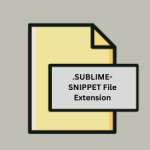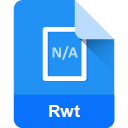.XIF File Extension

ScanSoft Pagis File
| Developer | Nuance Communications |
| Popularity | |
| Category | Page Layout Files |
| Format | .XIF |
| Cross Platform | Update Soon |
What is an XIF file?
The .XIF file extension is associated with ScanSoft Pagis software, primarily used for document scanning and management.
These files contain scanned documents and associated metadata, facilitating efficient organization and retrieval of scanned data.
More Information.
ScanSoft Pagis emerged in the late 1990s as a comprehensive solution for personal and small business document management needs.
It aimed to simplify the transition from physical to digital document storage by offering robust scanning features coupled with intuitive organizational tools.
.XIF files were integral to this process, serving as containers for scanned images and associated metadata such as OCR text and annotations.
Origin Of This File.
ScanSoft Pagis, developed by ScanSoft (later acquired by Nuance Communications), was renowned for its document scanning and optical character recognition (OCR) capabilities.
.XIF files were used as part of its document management system, enabling users to digitize paper documents for electronic storage and manipulation.
File Structure Technical Specification.
.XIF files typically consist of:
- Scanned Images: Stored in a compressed format to minimize file size while preserving quality.
- Metadata: Includes OCR text, annotations, tags, and document properties.
- Indexing Information: Facilitates quick retrieval and searching within the Pagis software environment.
Technical specifications may vary slightly depending on the Pagis software version, but the core structure remains consistent in storing scanned images and relevant document data in a proprietary format optimized for efficient storage and retrieval.
How to Convert the File?
Converting .XIF files to more widely supported formats like PDF or TIFF may be necessary for compatibility with other software or long-term archival purposes. Conversion methods include:
- Using ScanSoft Pagis: Export .XIF files to formats supported by Pagis, such as PDF or TIFF, through the software’s export functionality.
- Third-Party Conversion Tools: Utilize specialized document conversion software capable of converting .XIF files to common formats.
- Virtual Printers: Print .XIF files to virtual printers that support PDF or TIFF output, effectively converting them during the printing process.
Advantages And Disadvantages.
Advantages:
- Efficient Document Management: Enables users to organize, search, and retrieve scanned documents efficiently.
- OCR Capabilities: Converts scanned text into editable and searchable content, enhancing document usability.
- Compression: Uses efficient compression algorithms to minimize storage requirements without compromising image quality.
Disadvantages:
- Proprietary Format: .XIF files are specific to ScanSoft Pagis, potentially limiting compatibility with other software applications.
- Dependency on Pagis Software: Accessing and manipulating .XIF files typically requires ScanSoft Pagis or compatible software, restricting flexibility.
How to Open XIF?
Open In Windows
- Install ScanSoft Pagis or Nuance PaperPort (its successor) to open .XIF files natively.
- Alternatively, convert .XIF files to PDF or TIFF using compatible software for broader accessibility.
Open In Linux
- Use Wine or other compatibility layers to run ScanSoft Pagis under Linux, though functionality may vary.
- Convert .XIF files to PDF or TIFF using virtualization or conversion tools compatible with Linux.
Open In MAC
- Use virtualization software to run Windows and install ScanSoft Pagis within a virtual environment.
- Convert .XIF files to compatible formats using third-party conversion tools available on macOS.













